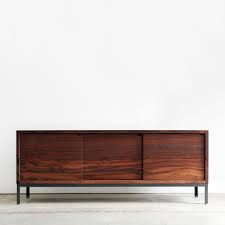credenza
英 [krɪˈden.zə]
美 [krɪˈden.zə]
- n. 书橱,书柜;餐具橱

英语词源
- credenza (n.)
- 1883, "an Italian sideboard," from Italian credenza, literally "belief, credit," from Medieval Latin credentia (see credence).
The same evolution that produced this sense in Italian also worked on the English word credence, which in Middle English also meant "act or process of testing the nature or character of food before serving it as a precaution against poison," a former practice in some royal or noble households. Because of that, in medieval times it also meant "a side-table or side-board on which the food was placed to be tasted before serving;" hence, in later use, "a cupboard or cabinet for the display of plate, etc." These senses fell away in English, and the modern furniture piece, which begins to be mentioned in domestic interiors from c. 1920, took its name from Italian, perhaps as a more elegant word than homely sideboard.
权威例句
- 1. Credenza with 2 cabinets. Door clearance can be shown or hidden.
- 带有两个橱柜的书柜. 可显示或隐藏门的净空.
- 2. A steel wire screen above the office's credenza.
- 一张钢丝屏风悬挂在办公室的书柜之上.
